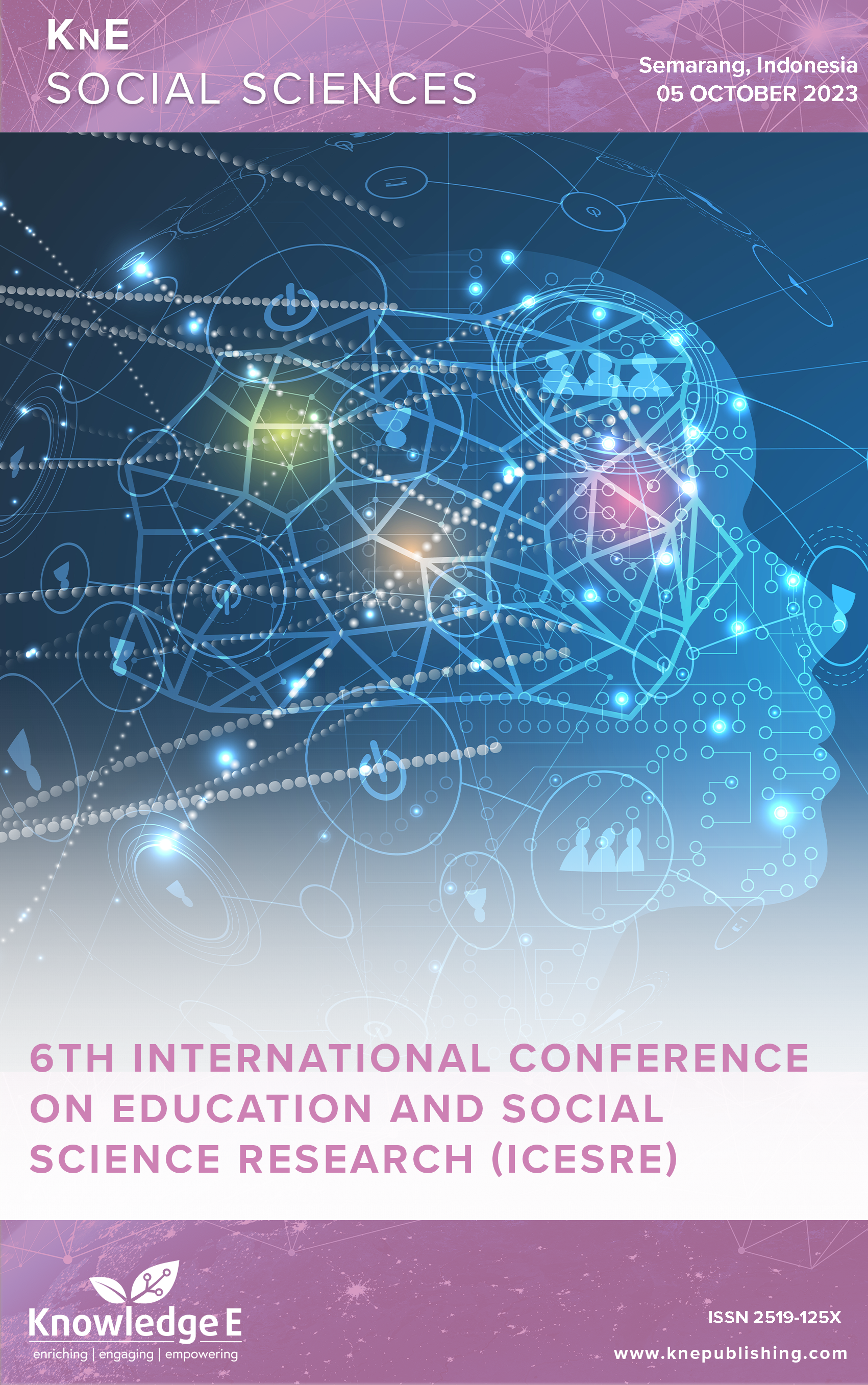Learning Effectiveness of ESD-Oriented Natural and Social Science Projects in Realizing Pancasila Student Profiles for Vocational High School Students
DOI:
https://doi.org/10.18502/kss.v9i6.15263Abstract
The objective of this research is to assess the effectiveness of ESD-oriented Natural and Social Sciences Project (IPAS Project) learning in achieving the Pancasila student profile of critical reasoning dimensions. This research employs a quasi-experimental approach with a pre-test and post-test control group design. The research sample consisted of two groups: the experimental class and the control class. According to Ennis, a validated critical thinking test serves as the measurement instrument to assess the increase in students’ critical reasoning abilities after learning intervention. An observation sheet is also utilized to observe the Pancasila student profile in the critical reasoning dimension. The results of the research show that ESD-oriented natural and social science project learning is moderately effective in achieving the Pancasila student profile regarding the critical reasoning dimension. The average N-Gain score for the experimental class (ESD-oriented learning) is 63.51%, falling within the moderately effective and average category. The average N-Gain score for the control class (non-ESD-oriented learning) is 56.05%. Based on the observations of Pancasila student profiles of students engaging in ESD-oriented natural and social science project learning in the critical reasoning dimension, it is evident that some students in all elements of critical reasoning can attain the developing category as anticipated, according to the phase. These findings indicate that the ESD approach in learning natural and social science projects can effectively realize the Pancasila student profile of critical reasoning dimensions.
Keywords: IPAS project (natural and social sciences project), ESD (education for sustainable development), Pancasila student profile; critical reasoning
References
Efendi Y, et al. Application of Pancasila Values in Educational Institutions. Journal of Pancasila and Citizenship. 2020;5(1):54–65. DOI: https://doi.org/10.24269/jpk.v5.n1.2020.pp54-65
Mahendra Y. Character Education in Elementary Schools. Proceedings of the National Seminar on National Basic Education Performance. 2019;2019:257–66.
Ministry of Education and Culture. Strategic Plan of the Ministry of Education and Culture 2020-2024. 2020.
Ridho MR. Pancasila Student Profile Education Viewed from the Concept of Industrial Revolution 4.0. National Seminar on Strategic Management for the Development of Pancasila Student Profiles in PAUD and Basic Education, 2022, 1.1.
Hale CB, Wadu LB, Gultom AF. Citizen Involvement in Sustainable Development to Create a Clean Environment. De Cive: Journal of Pancasila and Citizenship Education Research, 2021, 1.12: 447–453-447–453. DOI: https://doi.org/10.56393/decive.v1i12.211
Nurfatimah SA, Hasna S, Rostika D. Building the Quality of Education in Indonesia in Realizing the Sustainable Development Goals (SDGs). Program. Jurnal Basicedu. 2022;6(4):6145–54. DOI: https://doi.org/10.31004/basicedu.v6i4.3183
Lestari P. The urgency of habituation to the character values of independence and responsibility of secondary school students. Social Sciences Scientific Journal. 2018;4(2):114–9.
Sutianah C. Improving Students’ Soft Skills Through Jobskils-Based Integrated Teaching and Learning in Vocational High Schools. Journal of Economics. Social & Humanities. 2022;3(05):137–48.
Suyatna A. Building Students’ Critical. Creative, Collaborative, Communicative Thinking Abilities Through the Learning Process; 2017.
Sulistiani E, Masrukan M. The importance of critical thinking in mathematics learning to face MEA challenges. In: PRISMA, Proceedings of the National Mathematics Seminar. 2017. p. 605-612.
Zubaidah S. 21st century skills: Skills taught through learning. In: National Education Seminar. 2016. p. 1-17.
Prayitno Y, et al. Education with an environmental perspective towards sustainable development. Wacana Journal of Social and Humanity Studies. 2013;16(1):41–51.
Widyawati RA. Green Building in Sustainable Development Energy Saving Concept Towards Green Building in Jakarta. KaLIBRASI Journal- Interdisciplinary Work in the Fields of Architectural, Civil. Ind Eng. 2019;2:1. DOI: https://doi.org/10.37721/kal.v13i0.463
Setianingtias R, et al. Modeling indicators for sustainable development goals in Indonesia. J Econ Dev. 2019;27(2):61–74. DOI: https://doi.org/10.14203/JEP.27.2.2019.61-74
UNESCO (Eds). (2005). United Nations Decade of Education for Sustainable Development (2005-2014): International Implementation Scheme. Paris, UNESCO. Retrieved on July 27, 2015, from http://unesdoc.unesco.org/images/0014/001486/148654e.pdf
Indrati DA, Hariadi PP. ESD (education for sustainable development) through biology learning. In: Symposium on Biology Education. 2016. p. 371-382.
Ennis RH. Critical thinking: A streamlined conception. The Palgrave handbook of critical thinking in higher education. New York: Palgrave Macmillan US; 2015. pp. 31–47. DOI: https://doi.org/10.1057/9781137378057_2
Hake. (1999). Analyzing charge Gain scores. America Educational Research Association’s Division, Measurement and Research Methodology.
Kemdikbud. (2021). Pancasila Student Profile. https://guru.kemdikbud.go.id/
Meilani IA, et al. Network Culture Learning Oriented to Education for Sustainable Development to Improve Critical and Creative Thinking Abilities. BIOFAIR; 2023. pp. 35–44. DOI

